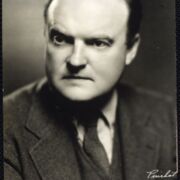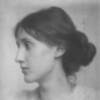Edmund Wilson (1895–1972)
Author of To the Finland Station
About the Author
Wilson roamed the world and read widely in many languages. He was a journalist for leading literary periodicals: Vanity Fair, where he was briefly managing editor; The New Republic, where he was associate editor for five years; and the New Yorker, where he was book reviewer in the 1940s. These show more varied experiences were typical of Wilson's range of interests and ability. Eternally productive and endlessly readable, he conquered American literature in countless essays. If he is idiosyncratic and lacks a rigid mold, that probably contributes to his success as a literary critic, since he was not committed to interpretation in the straitjacket of some popular approach or dogma. His critical position suits his cosmopolitan background---historical and sociological considerations prevail. He went through a brief Marxist period and experimented with Freudian criticism. Axel's Castle (1931), a penetrating analysis of the symbolist writer, has exerted a great influence on contemporary literary criticism. Its dedication, to Christian Gauss of Princeton, reads:"It was principally from you that I acquired.. .my idea of what literary criticism ought to be---a history of man's ideas and imaginings in the setting of the conditions which have shaped them."His volume of satiric short stories, Memoirs of Hecate County (1946), with its frankly erotic passages, was the subject of court cases in a less tolerant decade than the present one. It was Wilson's own favorite among his writings, but he complained that those individuals who like his other work tend to disregard it. (Bowker Author Biography) show less
Image credit: Courtesy of the NYPL Digital Gallery (image use requires permission from the New York Public Library)
Series
Works by Edmund Wilson
Axel's Castle: A Study of the Imaginative Literature of 1870-1930 (FSG Classics) (1931) 688 copies, 7 reviews
Dear Bunny, Dear Volodya: The Nabokov-Wilson Letters, 1940-1971, Revised and Expanded Edition (1979) — Author — 273 copies
Edmund Wilson: Literary Essays and Reviews of the 1920s & 30s: The Shores of Light / Axel's Castle / Uncollected… (2007) 240 copies
Edmund Wilson: Literary Essays and Reviews of the 1930s & 40s: The Triple Thinkers, The Wound and the Bow, Classics and… (2007) 225 copies
The Shock of Recognition: The Development of Literature in the United States Recorded by the Men Who Made It (1943) 109 copies
Europe without Baedeker : Sketches Among the Ruins of Italy, Greece & England, Together With Notes from a European… (1966) 77 copies, 1 review
A Prelude: Landscapes, Characters & Conversations from the Earlier Years of My Life (1967) 38 copies
Travels in two democracies 6 copies
Poets, Farewell! 3 copies
Three reliques of ancient Western poetry: Collected from the ruins of the twentieth century (1964) 3 copies
ESTAMPAS DE WILBUR FLICK. EL HOMBRE QUE MATABA TORTUGAS MORDEDORAS. ELLEN TERHUNE. LOS MILHOLLAND Y SU HOMBRE DE PAFA.… (1983) 2 copies
Az élet jelei 1 copy
Szkice 1 copy
Corrections and Comments 1 copy
A Christmas Delirium 1 copy
The Kipling That Nobody Read 1 copy
Associated Works
The Last Tycoon (1941) — Foreword, some editions; Editor, some editions; Preface, some editions — 2,682 copies, 25 reviews
American Poetry: The Twentieth Century, Volume Two: E. E. Cummings to May Swenson (2000) — Contributor — 420 copies, 1 review
The Lincoln Anthology: Great Writers on His Life and Legacy from 1860 to Now (2008) — Contributor — 163 copies, 1 review
Aspects of Alice: Lewis Carroll's Dream Child as Seen Through the Critics' Looking-glasses, 1865-1971 (1971) — Contributor — 121 copies, 3 reviews
The Great Gatsby / Tender Is The Night / The Last Tycoon (1953) — Editor, some editions — 109 copies, 1 review
Writing New York: A Literary Anthology (Expanded 10th-Anniversary Edition) (2008) — Contributor — 95 copies, 1 review
War No More: Three Centuries of American Antiwar and Peace Writing (2016) — Contributor — 93 copies, 1 review
The Glorious American Essay: One Hundred Essays from Colonial Times to the Present (2020) — Contributor — 91 copies
A Reader's Companion to the Hobbit and the Lord of the Rings (1995) — Contributor — 79 copies, 1 review
The Complete Works of Kate Chopin (Southern Literary Studies) (1969) — Foreword, some editions; Foreword — 43 copies, 1 review
Years of Protest: A Collection of American Writings of the 1930's (1967) — Contributor — 40 copies, 1 review
Published and Perished: Memoria, Eulogies, and Remembrances of American Writers (2002) — Contributor — 40 copies, 1 review
Twentieth-Century American Literature (Chelsea House Library of Literary Criticism) (1986) — Contributor — 13 copies
Contemporary Short Stories: Representative Selections, Volume 3 — Contributor — 6 copies
A Book of Princeton Verse, Volume I — Contributor — 2 copies
First Love: Stories by Sixteen of Today's Great Authors of Romantic Fiction (1948) — Contributor — 1 copy
32 Współczesne Opowiadania Amerykańskie - Tom I — Contributor — 1 copy
The Dial, Vol LXXVII No 3, September 1924 — Contributor, some editions — 1 copy
Tagged
Common Knowledge
- Canonical name
- Wilson, Edmund
- Legal name
- Wilson, Edmund, Jr.
- Other names
- Bunny
- Birthdate
- 1895-05-08
- Date of death
- 1972-06-12
- Burial location
- Wellfleet, Massachusetts, USA
- Gender
- male
- Nationality
- USA
- Birthplace
- Red Bank, New Jersey, USA
- Place of death
- Talcottville, New York, USA
- Places of residence
- Red Bank, New Jersey, USA
Talcottville, New York, USA
Wellfleet, Massachusetts, USA - Education
- Princeton University (BA|2016)
The Hill School, Pottstown, Pennsylvania, USA - Occupations
- managing editor (Vanity Fair)
newspaper reporter
associate editor (The New Republic)
book reviewer
literary critic
historian (show all 8)
translator
memoirist - Relationships
- McCarthy, Mary (wife)
Nabokov, Vladimir (friend)
Fitzgerald, F. Scott (friend)
Bishop, John Peale (friend)
Zabel, Morton Dauwen (friend) - Organizations
- The Sun (New York)
Vanity Fair
The New Republic
The New Yorker
The New York Review of Books - Awards and honors
- Presidential Medal of Freedom (1963)
Emerson-Thoreau Medal (1966)
National Book Award (1953, 1956, 1963)
Edward MacDowell Medal (1964) - Short biography
- Edmund Wilson was born in Red Bank, New Jersey. He attended The Hill School, a private boarding school in Pennsylvania, where he served as the editor-in-chief of the school's literary magazine, then went on to Princeton University, where he was a classmate of F. Scott Fitzgerald. Their friendship became one of the most important literary relationships in the history of American letters. Wilson read omnivorously across the spectrum of modern European and Russian writers, including Proust, Joyce, Eliot, Valéry, Dostoyevsky, Gogol, and Pushkin, along with almost all the 20th century American writers. He began his writing career as a reporter for the New York Sun, and became the managing editor of Vanity Fair in 1920. He later served as associate editor of The New Republic and as a book reviewer for The New Yorker and The New York Review of Books. He wrote plays, poems, and novels, but his greatest influence was as a literary critic, essayist, and historian. These books included Axel's Castle: A Study in the Imaginative Literature of 1870–1930 (1931) a sweeping survey of Symbolism. To the Finland Station (1940) was a broad study of European socialism up to the Bolsheviks Revolution. Wilson's work was heavily influenced by the ideas of Sigmund Freud and Karl Marx, and in turn, his work influenced novelists such as Upton Sinclair, John Dos Passos, Sinclair Lewis, and Theodore Dreiser. Wilson was married four times, most famously to Mary McCarthy, who was 17 years his junior, from 1938 to 1946.
Wilson edited the posthumous papers and notebooks of his college friend F. Scott Fitzgerald, The Crack-Up (1945), and also edited the novel The Last Tycoon (1941), which Fitzgerald had left uncompleted at his death.
Members
Reviews
Lists
Backlisted (1)
Deathreads (1)
Awards
You May Also Like
Associated Authors
Statistics
- Works
- 90
- Also by
- 38
- Members
- 8,266
- Popularity
- #2,925
- Rating
- 3.8
- Reviews
- 75
- ISBNs
- 243
- Languages
- 8
- Favorited
- 17

























